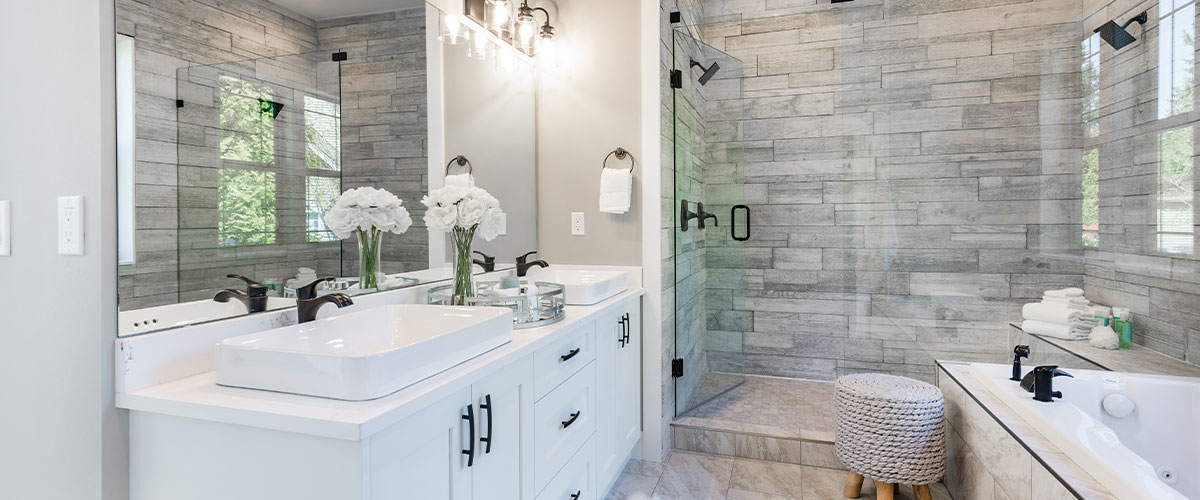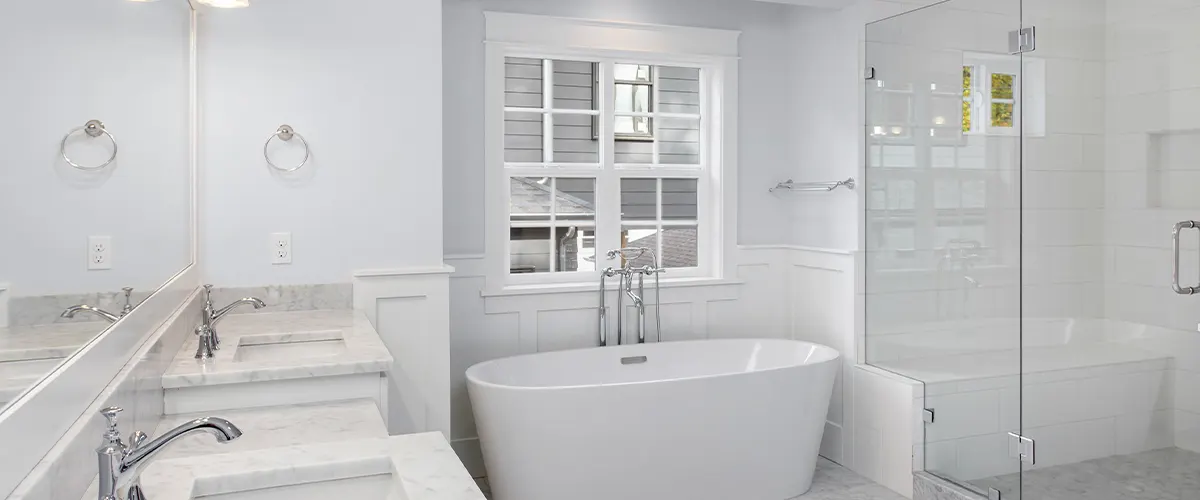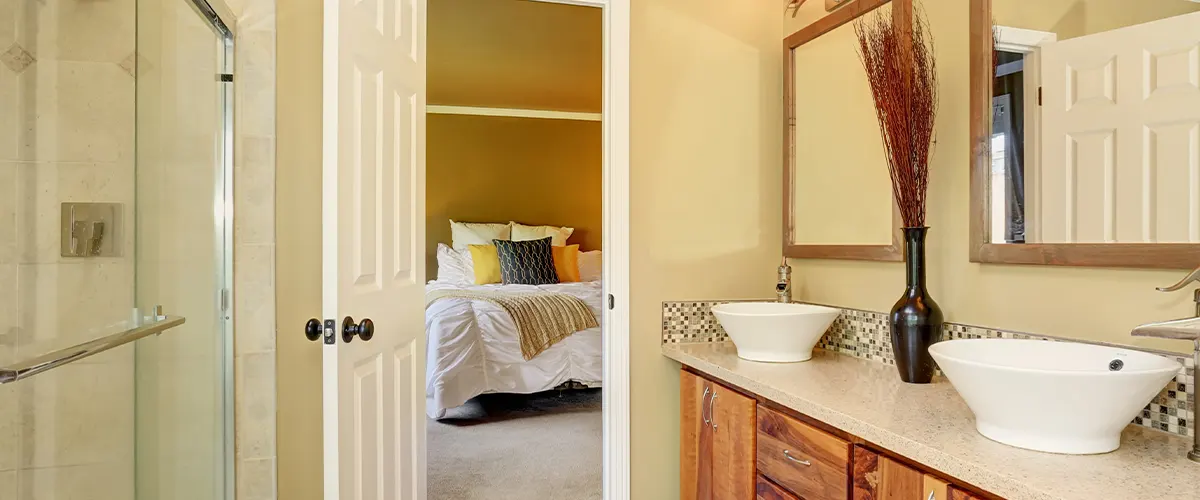Facing a decision on whether to add a bathroom in your basement?
It may seem like an excellent idea, but it’s not always the best course of action. This article will explain why adding a basement bathroom might not be as beneficial as you think, touching on concerns such as installation costs and potential moisture issues.
Ready for some home improvement insight that could save time and money? Let’s delve into it!

Key Takeaways
- Adding a basement bathroom can make your house expenses go up. This is because you have to do lots of plumbing work and buy new materials.
- Moisture problems often occur in basements, which could lead to mold growth. This makes the space unhealthy to use and costs extra money for repairs.
- A basement bathroom won't raise your house value as much as other improvements might.
Reasons to Avoid Adding a Basement Bathroom
Adding a bathroom to your basement might seem like an enticing upgrade, but there are several downsides you should consider.
- The installation process can be both tricky and expensive
- The basement’s general susceptibility to moisture may also lead to mold issues
- Adding a full basement bathroom often offers a limited return on investment
Costly and complex installation process
Adding a basement bathroom involves high costs and intricate construction procedures. The complexity of plumbing often surprises homeowners, particularly if they are not prepared for such an endeavor.
Both water supply lines and waste outlets must be installed–a task that demands the expertise of trained professionals to ensure proper functioning and code compliance. These can dramatically drive up expenses especially in older homes where obstacles like foundational concrete or embedded electrical wiring exist.
Moreover, this does not even factor in the cost yet of fixtures and finishing materials necessary to complete the whole project.
Potential for moisture and mold issues
Basements are prone to high humidity levels due to their underground location, which can lead to moisture problems. Moisture control in basements must be dealt with effectively before thinking about adding a bathroom.
Ignoring this aspect might cause an extreme rise in dampness, making the space uncomfortable and unhealthy. The presence of persistent damp conditions has the potential to encourage mold growth which poses several health threats such as allergies and respiratory issues.
To fight moisture and mold issues is challenging since it requires installing proper basement ventilation which increases overall costs significantly too. Ensuring adequate waterproofing during basement construction is crucial but unfortunately not always sufficient for maintaining a dry atmosphere once you add things like showers and tubs that produce large amounts of steam vapor daily.
Limited return on investment
Adding a basement bathroom may seem like an enticing home renovation project initially, especially considering the convenience of a downstairs lavatory. However, it’s crucial to consider the long-term financial implications as well.
Simply put, basement bathrooms do not significantly boost home value equal to their installation costs. While having that extra facility might add some appeal for potential buyers, often it doesn’t make enough impact to justify the hefty plumbing and construction expenses entailed in the creation process itself.
Thus, homeowners tend to experience a limited return on investment following such basement remodeling endeavors. Investing those funds into more lucrative renovation projects could potentially yield bigger boosts in your property’s overall worth.

Alternative Solutions for Bathroom Needs in the Basement
Instead of installing a full bathroom in your basement, considering more affordable and practical options like adding only a half bathroom or improving an existing one on another floor can better meet your needs.
Nearby facilities also provide viable alternatives to consider when addressing the need for extra bathrooms in the house.
Adding only a half bathroom to your basement
Adding a half bathroom in the basement can be a helpful alternative. Primarily featuring just a sink and toilet, this type of arrangement requires less plumbing work.
It also means dwelling into fewer complex basement construction considerations such as extensive waterproofing or large-scale drainage adjustments. Such choices simplify your home improvement project considerably while still delivering conveniences for both you and your house guests.
Notably, lesser space is required for this setup, providing an opportunity for more creative utilization of the remaining area in your basement renovation process.
Upgrading an existing bathroom on the upper levels
Upgrading an existing bathroom on the upper floors presents a practical alternative for homeowners. Here are clear steps to take:
- Assess your current bathroom layout: Identify what works in your existing set-up and areas that need improvement.
- Define your needs: Are you after a luxurious space or simply providing more functionality?
- Allocate budget: Cost of adding a bathroom varies widely, so set a reasonable budget from the start.
- Choose quality fixtures: Picking durable, top-tier fixtures can significantly boost home value, rather than opting for cost-efficient options.
- Hire seasoned professionals: Plumbing installation experts and interior designers can streamline the renovation process and ensure high-quality results.
- Plan for optimal ventilation in basement bathrooms: This helps maintain a healthy environment and prevent mold and mildew in basements.
- Acknowledge construction timelines: Understand that upgrades can temporarily disrupt normal routines at home.
Utilizing nearby bathroom facilities
Opting to use nearby bathroom facilities in your home is an excellent compromise instead of adding a new one in the basement. You can schedule family members’ bathroom usage to avoid conflicts and maintain privacy.
This approach saves not only time but also money since it eliminates costly installation and maintenance associated with basement bathrooms. Furthermore, using existing bathrooms reduces the stress on your house’s plumbing system and cuts down potential risks tied with moisture-related problems such as mold and mildew growth in your basement.

Conclusion
Exploring these three reasons, it’s clear that adding a basement bathroom is not always the most practical or budget-friendly project. Weighing out all factors such as cost, potential risks from mold growth due to moisture, and the questionable ROI should be carefully considered.
Explore alternative solutions for convenience without diving too deep into excessive costs and complications.
